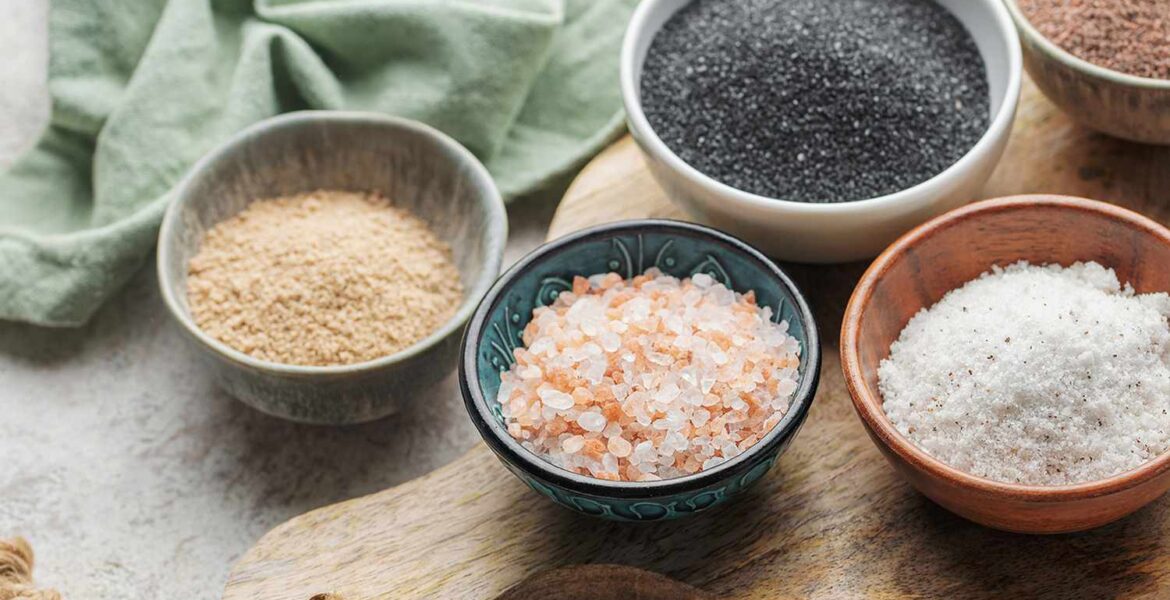Salt is one of the oldest and most essential ingredients in human history. Beyond its basic role as a flavor enhancer, salt comes in many forms, each with distinct textures, flavors, and culinary or industrial uses. Let’s dive into the fascinating variety of salts you might encounter in the kitchen, on store shelves, or even in nature.
Celtic Sea Salt

Celtic sea salt is harvested by hand from the coastal tidal ponds of Brittany, France, using traditional wooden rakes. It’s known for its moist, chunky crystals with a subtle grey tint, which comes from the clay lining of the salt beds. This salt retains a rich mineral content and has a naturally briny flavor, making it perfect for finishing dishes or seasoning stews and baked goods. Its slightly damp texture sets it apart from other salts.
Black Lava Salt

Black lava salt is a striking black-colored sea salt blended with activated charcoal, typically harvested in volcanic regions like Hawaii or Cyprus. It has a mildly earthy flavor and a coarse texture, often used as a dramatic finishing salt. While the charcoal is sometimes marketed for detoxifying properties, there’s no scientific evidence supporting health benefits from consuming it. Its main appeal lies in its visual flair and subtle mineral earthiness.
Red Hawaiian Salt

Red Hawaiian salt, or Alaea salt, is mixed with volcanic red clay called ‘Alaea,’ giving it a distinctive rusty red color and an earthy flavor. Traditionally used in Hawaiian cooking, it adds a unique mineral-rich taste to pork, fish, and other local dishes. It’s both flavorful and visually striking. The salt holds cultural significance in Hawaiian traditions, where it is believed to have cleansing and healing properties.
Himalayan Pink Salt

Mined from ancient salt deposits in the Khewra Salt Mine in Pakistan, Himalayan pink salt is known for its beautiful pink color, which comes from iron oxide and other trace minerals. It’s available in fine grains, large chunks, or slabs, often used both as a finishing salt and for decorative or grilling purposes. While its mineral content is highlighted, its appeal often lies in its appearance and presentation.
Fleur de Sel

Fleur de Sel is a rare, hand-harvested sea salt collected from the surface of coastal salt ponds, especially in the Guérande region of France. Its light, flaky, and slightly moist crystals give it a delicate texture and flavor that make it a prized finishing salt for gourmet dishes like steak or chocolate. Due to its labor-intensive harvesting process, it’s one of the priciest salts available.
Persian Blue Salt

Persian blue salt is a rare and visually stunning salt mined from ancient salt lakes in Iran. Its beautiful blue-gray crystals owe their color to sylvite, a potassium mineral. It has a mild, slightly sweet flavor and is usually used as a finishing salt to add subtle taste and color to dishes. Its striking appearance makes it a popular choice for gourmet presentations and upscale plating.
Smoked Salt

Smoked salt is salt that has been cold-smoked over various wood fires like oak, hickory, or applewood, absorbing rich, smoky aromas and flavors. It’s a great way to add depth to meats, roasted vegetables, popcorn, or even cocktails without actual smoking. The flavor varies depending on the type of wood used, making it fun to experiment with different varieties.
[Contributed By Anushka Gaikwad]











